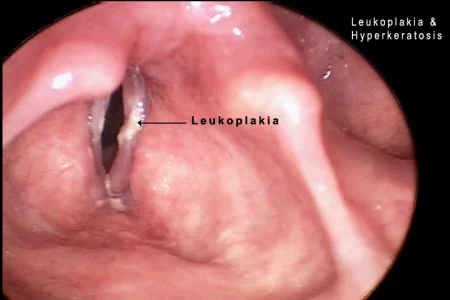When it comes to diagnosing autoimmune diseases, medical professionals often rely on a range of tests to provide insights into a patient’s health. One such test is the Antinuclear Antibody (ANA) test, which plays a crucial role in identifying autoimmune conditions. A positive ANA result can indicate various underlying health issues, spanning from lupus to rheumatoid arthritis. Understanding the spectrum of diseases associated with a positive ANA is essential for patients and healthcare providers alike. In this comprehensive guide, we delve into the diverse array of conditions linked to a positive ANA result, exploring their symptoms, diagnosis, and management.
Understanding ANA Test

Before delving into the diseases associated with a positive ANA, it’s vital to grasp the fundamentals of the ANA test itself. The ANA test detects the presence of autoantibodies that target components of the body’s cells’ nucleus. These autoantibodies are indicative of an overactive immune response, often signaling an autoimmune disorder. However, it’s essential to note that a positive ANA result doesn’t necessarily mean a person has an autoimmune disease. Further diagnostic tests and clinical evaluation are typically required for accurate diagnosis and treatment planning.
Diseases Associated with Positive ANA
Systemic Lupus Erythematosus (SLE)
-
- SLE is one of the most well-known autoimmune diseases associated with a positive ANA result.
- Symptoms can vary widely, including fatigue, joint pain, skin rashes (especially a characteristic butterfly rash on the face), and organ involvement.
- Diagnosis involves a combination of clinical evaluation, ANA testing, and other specific laboratory tests such as anti-dsDNA and anti-Smith antibodies.
- Treatment aims to manage symptoms and prevent flares, often involving medications like corticosteroids, antimalarials, and immunosuppressants.
Rheumatoid Arthritis (RA)
-
- While RA primarily affects the joints, it can also present with systemic symptoms and may produce a positive ANA result.
- Symptoms include joint pain, stiffness, swelling, and systemic inflammation.
- Diagnosis involves a thorough clinical evaluation, imaging studies, and laboratory tests, including ANA and rheumatoid factor (RF) testing.
- Treatment strategies focus on reducing inflammation, preserving joint function, and preventing disease progression, often utilizing disease-modifying antirheumatic drugs (DMARDs) and biologics.
Sjögren’s Syndrome
-
- Sjögren’s syndrome is characterized by dry eyes and mouth due to immune-mediated damage to the glands that produce tears and saliva.
- Patients may also experience joint pain, fatigue, and systemic manifestations.
- Diagnosis involves a combination of clinical evaluation, specialized tests such as Schirmer’s test and salivary gland biopsy, and ANA testing.
- Treatment focuses on symptom management, including the use of artificial tears and saliva substitutes, as well as immunosuppressive medications in severe cases.
Systemic Sclerosis (Scleroderma)
-
- Systemic sclerosis is a connective tissue disorder characterized by fibrosis and vascular abnormalities, leading to skin thickening, organ dysfunction, and Raynaud’s phenomenon.
- ANA positivity, particularly with a speckled or nucleolar pattern, is common in systemic sclerosis.
- Diagnosis involves clinical assessment, imaging studies, and specific antibody testing, including ANA and anti-centromere antibodies.
- Treatment aims to manage symptoms, prevent complications, and slow disease progression, often employing immunosuppressive agents, vasodilators, and supportive therapies.
Mixed Connective Tissue Disease (MCTD)
-
- MCTD is a rare autoimmune condition characterized by overlapping features of various connective tissue diseases, including SLE, scleroderma, and polymyositis.
- Patients may present with a diverse range of symptoms affecting multiple organ systems.
- Diagnosis relies on clinical evaluation, laboratory tests including ANA and specific autoantibodies such as anti-U1RNP, and sometimes imaging studies and biopsies.
- Treatment is tailored to manage individual symptoms and may involve a combination of medications used for different autoimmune diseases.
Other Autoimmune Conditions
-
- Beyond the aforementioned diseases, several other autoimmune conditions can produce a positive ANA result, including dermatomyositis, autoimmune hepatitis, and autoimmune thyroid disorders.
- Each of these conditions presents with its unique set of symptoms, diagnostic criteria, and treatment approaches.
In conclusion, a positive ANA result can indicate the presence of various autoimmune diseases, each with its distinct clinical manifestations, diagnostic criteria, and management strategies. From the well-known systemic lupus erythematosus to rare conditions like mixed connective tissue disease, understanding the spectrum of diseases associated with a positive ANA is crucial for timely diagnosis and appropriate treatment. Patients exhibiting symptoms suggestive of autoimmune disease should undergo thorough evaluation by healthcare professionals, including ANA testing, to guide further management and improve outcomes. Through continued research and clinical advancements, the medical community strives to enhance our understanding and management of these complex autoimmune conditions.








